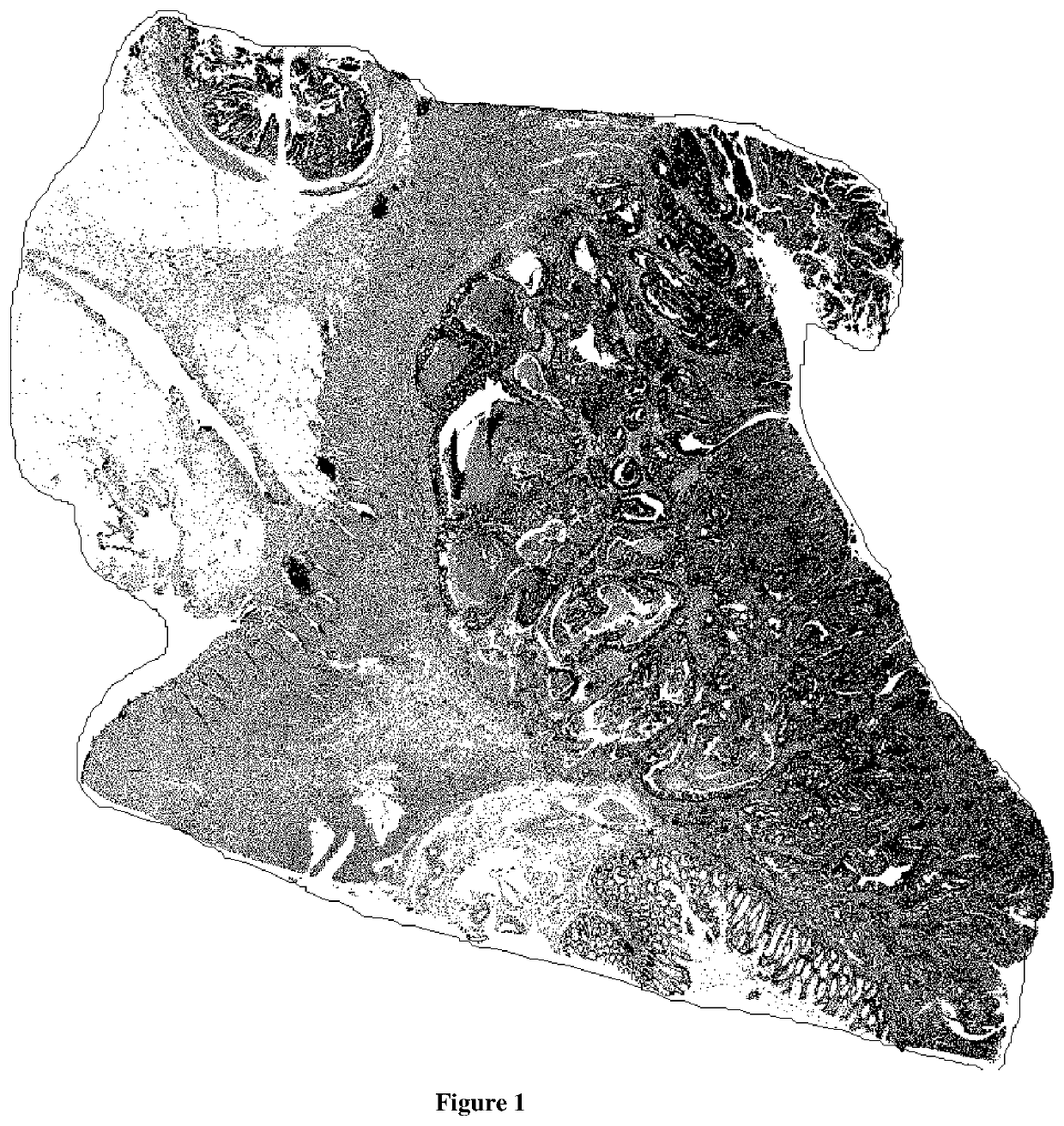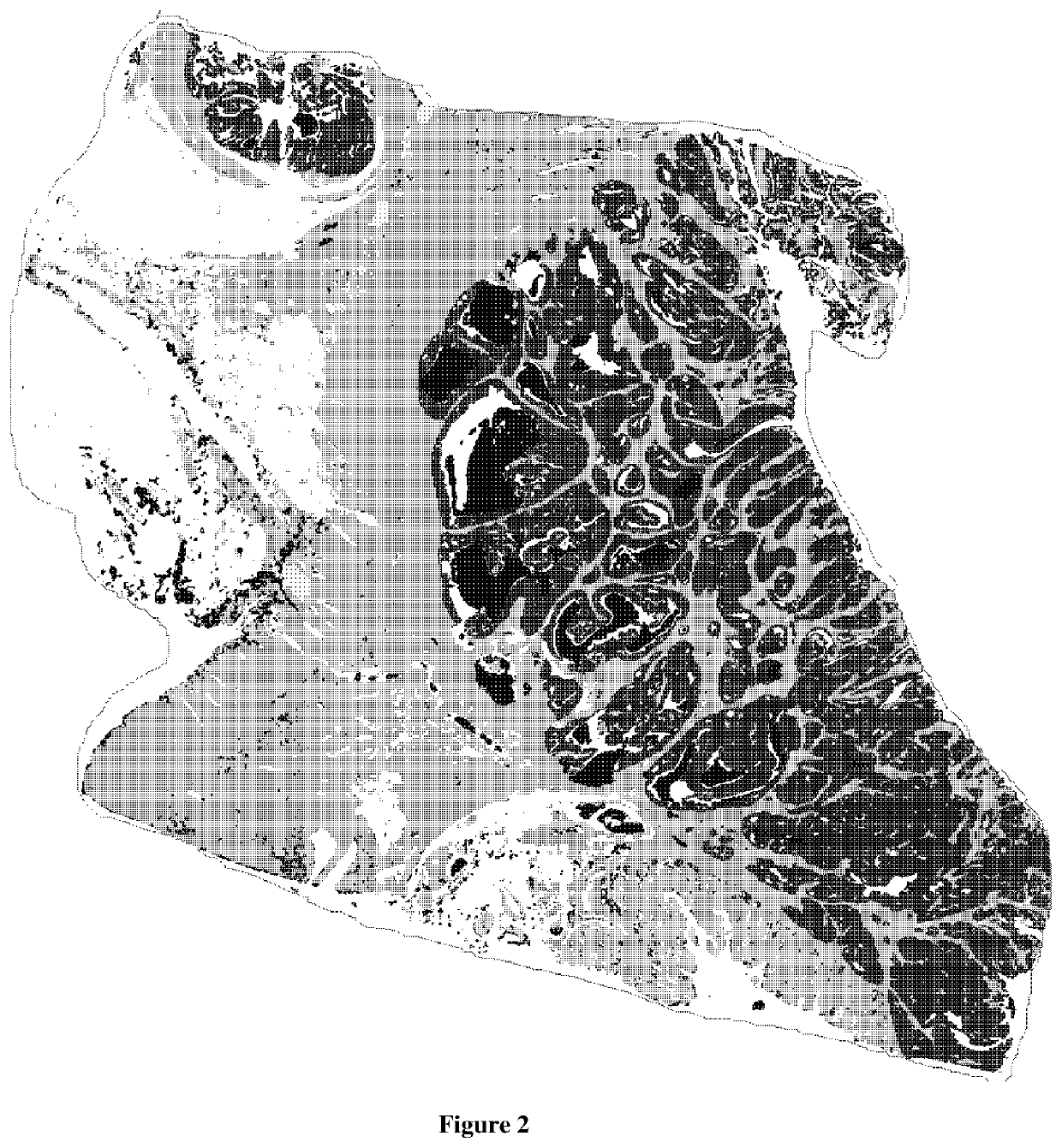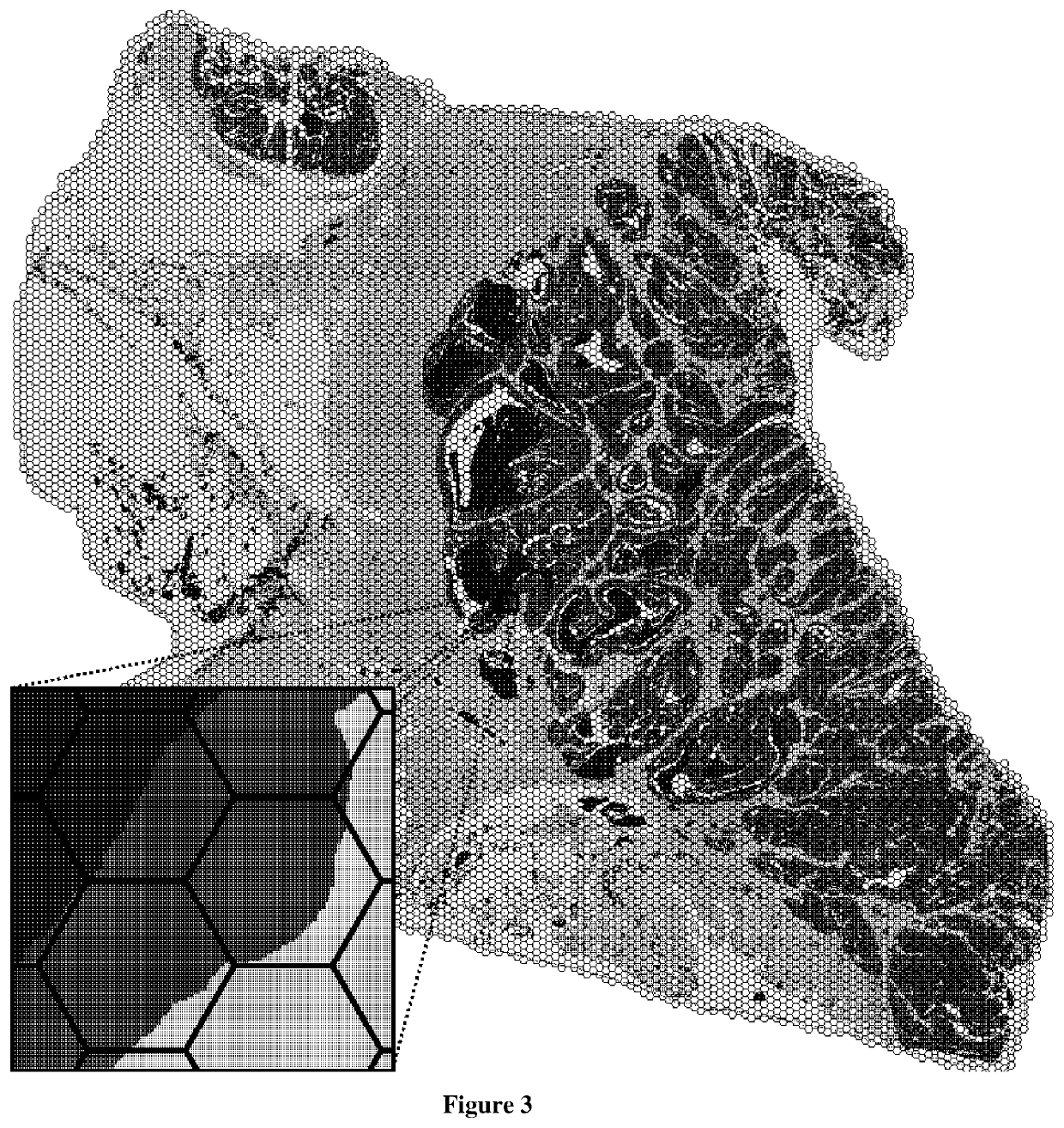Automated tumour-stroma interface zone detection for Anti-tumour response assessment by immunogradient indicators
a technology of immunogradient indicators and tumour stroma, which is applied in the field of automatic detection of tumour stroma interface zone detection for anti-tumour response assessment by immunogradient indicators, can solve the problems of not providing an explicit definition, surely reducing analysis capacity, and the informative power and clinical utility of til and other tme-context assays may be underachieved
- Summary
- Abstract
- Description
- Claims
- Application Information
AI Technical Summary
Benefits of technology
Problems solved by technology
Method used
Image
Examples
Embodiment Construction
[0043]The procedure for staining and imaging by microscopy was done by mounting 3 μm thick FFPE tissue sections of BC and CRC tumours on positively charged slides (other appropriate microscopy slides can be used), IHC was performed by Roche Ventana BenchMark ULTRA automated slide stainer (Ventana Medical Systems, Tucson, Ariz., USA). Antibodies against cytotoxic T cell marker CD8 (clone C8 / 144B, DAKO; antibody dilution 1:400) was used followed by ultraView Universal DAB Detection kit (Ventana Medical Systems, Tucson, Ariz., USA). The sections were counterstained with Mayer's haematoxylin. The IHC slides were digitized at ×20 objective magnification (0.5 μm resolution) using a ScanScope XT Slide Scanner (Leica Aperio Technologies, Vista, Calif., USA) (FIG. 1). The method can be accomplished on any manual or automated IHC, immunofluorescence, or other microscopy staining and imaging technique that produces data on cancer tissue compartments and biomarker of interest, positioned within...
PUM
 Login to View More
Login to View More Abstract
Description
Claims
Application Information
 Login to View More
Login to View More - R&D
- Intellectual Property
- Life Sciences
- Materials
- Tech Scout
- Unparalleled Data Quality
- Higher Quality Content
- 60% Fewer Hallucinations
Browse by: Latest US Patents, China's latest patents, Technical Efficacy Thesaurus, Application Domain, Technology Topic, Popular Technical Reports.
© 2025 PatSnap. All rights reserved.Legal|Privacy policy|Modern Slavery Act Transparency Statement|Sitemap|About US| Contact US: help@patsnap.com



